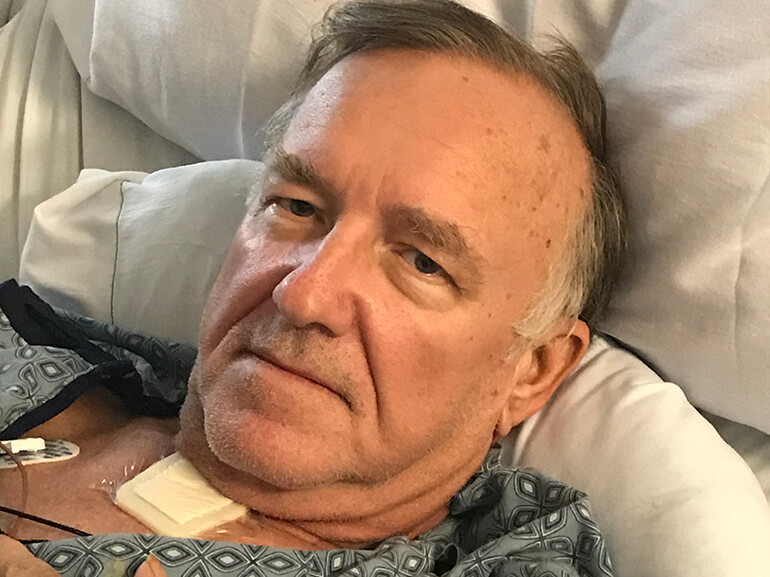Floyd Woodson's Story

In mid-June, Floyd Woodson played a round of golf with buddies at a nearby country club. While on the course, several mentioned the 65-year-old didn’t look well.
Floyd said he was just tired. Finishing the round, he drove home and went to bed. His wife, Diane, joined him to watch television. Suddenly, Floyd stopped breathing.
Diane sprang into action, dialing 911 and performing CPR until paramedics arrived.
Two rounds of defibrillation shocked the retired helicopter mechanic’s heart back to rhythm. An ambulance rushed him to the local hospital, where he was stabilized and transferred to Cleveland Clinic Weston. There, Floyd’s heart and lungs failed. For two weeks, a bypass machine supplied oxygenated blood. The last-chance effort worked, and his circulatory system came back online.
Returning to the local hospital, Floyd was connected to a ventilator and received a tracheostomy for airway support and feeding tube. He endured seizures, a blood clot, bouts of confusion and agitation.
By mid-July, Floyd no longer needed life-saving intervention but was weak, unable to breathe, speak or move independently. Diane chose Select Specialty Hospital – Palm Beach for the next step in her husband’s recovery.
“My main goal was to breathe on my own,” Floyd recalled. “I figured that once I could do that, I could eat normally, be with my wife, play with my grandchildren and, hopefully, get back to golfing again.”
A physician-led team, including nurses and therapists, created a plan to help him succeed.
Respiratory therapists led breathing, coughing and chest exercises and gradually reduced ventilator settings, allowing Floyd’s lungs to take over. Four days later, he liberated.
Speech and respiratory therapists placed a valve that redirected the tracheostomy’s airflow, allowing more normal speech. Floyd called his family for the first time in weeks, a connection made more precious due to COVID-19 visitor restrictions.
“Because they couldn’t visit, they called as much as possible,” he said. “I am indeed very blessed with a loving family.”
A week after liberating, Floyd discontinued all breathing support. Crossing that important milestone off the list was a powerful motivator.
Physical and occupational therapists rebuilt muscle mass and stamina with leg lifts, light arm weights, range of motion and other exercises. Soon, Floyd began using a walker to take laps in the hallway.
“I liked all the therapies and looked forward to doing them every day because I knew they’d make me better,” he said.
Speech therapy and dietitians collaborated on Floyd’s transition from the feeding tube. He practiced mouth, tongue and jaw exercises and ate texture-modified foods until swallowing reflexes recalibrated enough to resume regular meals.
After three weeks, Floyd exceeded his goals and eagerly returned home to Diane and their family, assisted by visiting health care workers.
“I am amazed at how far I’ve come in such a short time,” he said. “All the therapists were very patient with me, and I am so very thankful.”